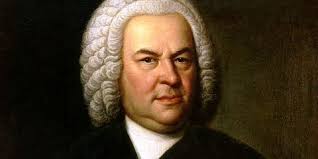The Concerto for Two Violins in D minor, BWV 1043, also known as the “Double Violin Concerto”, is one of the most celebrated and enduring compositions by Johann Sebastian Bach. Composed around 1730, during Bach’s tenure as music director in Leipzig, this concerto is a masterpiece of the Baroque period and a shining example of Bach’s genius for blending complex counterpoint with emotional depth.
The Leipzig Period and the Collegium Musicum
At the time of its composition, Bach was deeply involved with the Collegium Musicum, a secular musical society that performed regularly at the Café Zimmermann in Leipzig. This ensemble gave Bach the opportunity to write and perform instrumental music for skilled musicians outside the context of the church. The Concerto for Two Violins was likely composed for this group, possibly for one of Bach’s talented sons or prominent violinists in the Collegium.
Structure and Style
The concerto follows the traditional three-movement structure of the Italian concerto style, which Bach admired and often adopted:
- Vivace – The first movement is lively and spirited, with the two solo violins engaged in a vibrant dialogue. Bach weaves a dazzling tapestry of imitation and interplay, showcasing both virtuosic brilliance and expressive communication.
- Largo ma non tanto – The second movement is the emotional heart of the work. With its poignant and lyrical melodies, it features the solo violins intertwining in a tender and expressive duet over a steady orchestral accompaniment. This movement is frequently cited as one of Bach’s most beautiful and introspective pieces.
- Allegro – The final movement is energetic and jubilant, filled with rhythmic vitality and dynamic exchanges between the soloists. The contrapuntal writing displays Bach’s technical mastery, bringing the concerto to a brilliant and satisfying conclusion.
Legacy and Influence
The Concerto for Two Violins has remained a favorite among performers and audiences for centuries. Its appeal lies in the perfect balance it strikes between technical precision, emotional depth, and musical conversation. It has been performed by countless great violinists, including Yehudi Menuhin, David Oistrakh, Itzhak Perlman, and Hilary Hahn, often in collaboration with equally renowned partners.
Its influence can also be seen in the way it inspired later composers, particularly in the use of dual soloists and the conversational style between instruments. The concerto remains a staple of violin pedagogy, chamber music concerts, and Baroque repertoires worldwide.
Conclusion
Johann Sebastian Bach’s Concerto for Two Violins in D minor is more than just a brilliant Baroque concerto—it is a timeless conversation between two voices, full of passion, clarity, and joy. Whether heard in an intimate chamber hall or on a grand concert stage, this work continues to captivate listeners and inspire musicians, standing as one of the crowning jewels of Bach’s instrumental output.


Comments are closed